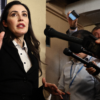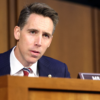
Harvard University professor Niall Ferguson writes in the New York Times:
Human beings are as good at devising ex post facto explanations for big disasters as they are bad at anticipating those disasters. It is indeed impressive how rapidly the economists who failed to predict this crisis — or predicted the wrong crisis (a dollar crash) — have been able to produce such a satisfying story about its origins. Yes, it was all the fault of deregulation.
There are just three problems with this story. First, deregulation began quite a while ago (the Depository Institutions Deregulation and Monetary Control Act was passed in 1980). If deregulation is to blame for the recession that began in December 2007, presumably it should also get some of the credit for the intervening growth. Second, the much greater financial regulation of the 1970s failed to prevent the United States from suffering not only double-digit inflation in that decade but also a recession (between 1973 and 1975) every bit as severe and protracted as the one we’re in now. Third, the continental Europeans — who supposedly have much better-regulated financial sectors than the United States — have even worse problems in their banking sector than we do. The German government likes to wag its finger disapprovingly at the “Anglo Saxon” financial model, but last year average bank leverage was four times higher in Germany than in the United States. Schadenfreude will be in order when the German banking crisis strikes.
…
The reality is that crises are more often caused by bad regulation than by deregulation. For one thing, both the international rules governing bank-capital adequacy so elaborately codified in the Basel I and Basel II accords and the national rules administered by the Securities and Exchange Commission failed miserably. It was the Basel system of weighting assets by their supposed riskiness that essentially allowed the Enronization of banks’ balance sheets, so that (for example) the ratio of Citigroup’s tangible on- and off-balance-sheet assets to its common equity reached a staggering 56 to 1 last year.
The Daily Signal depends on the support of readers like you. Donate now



























